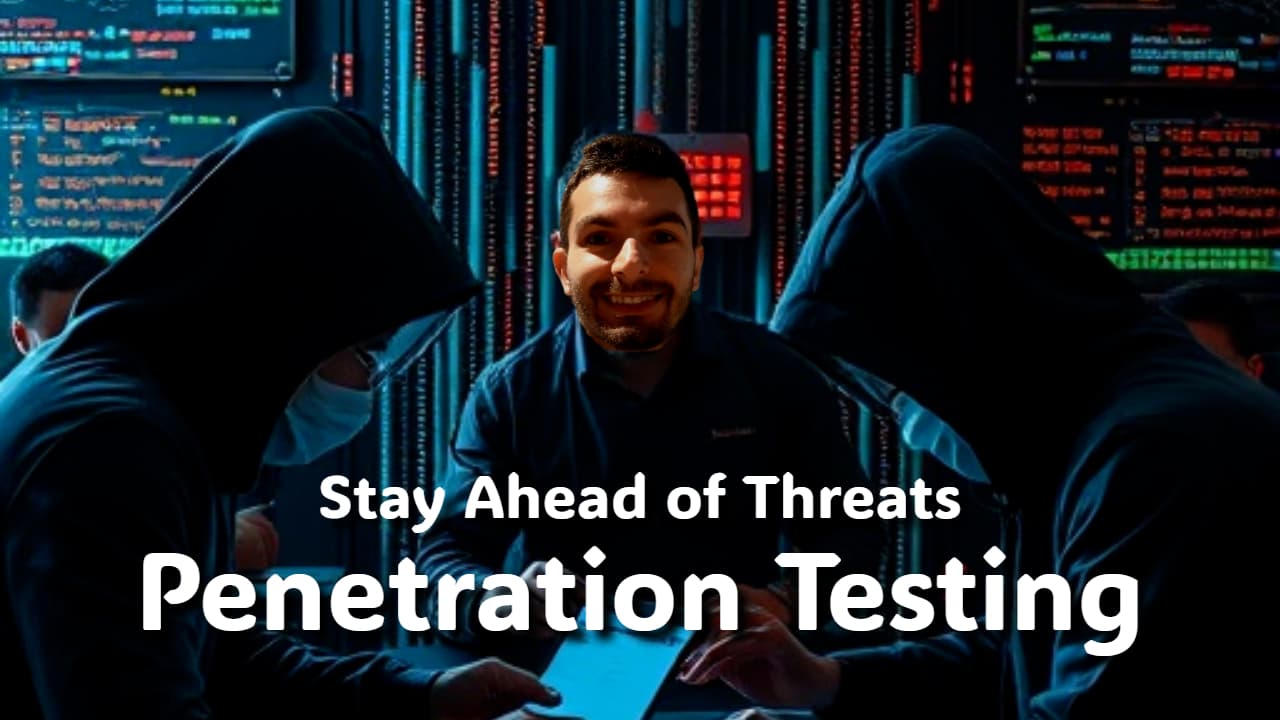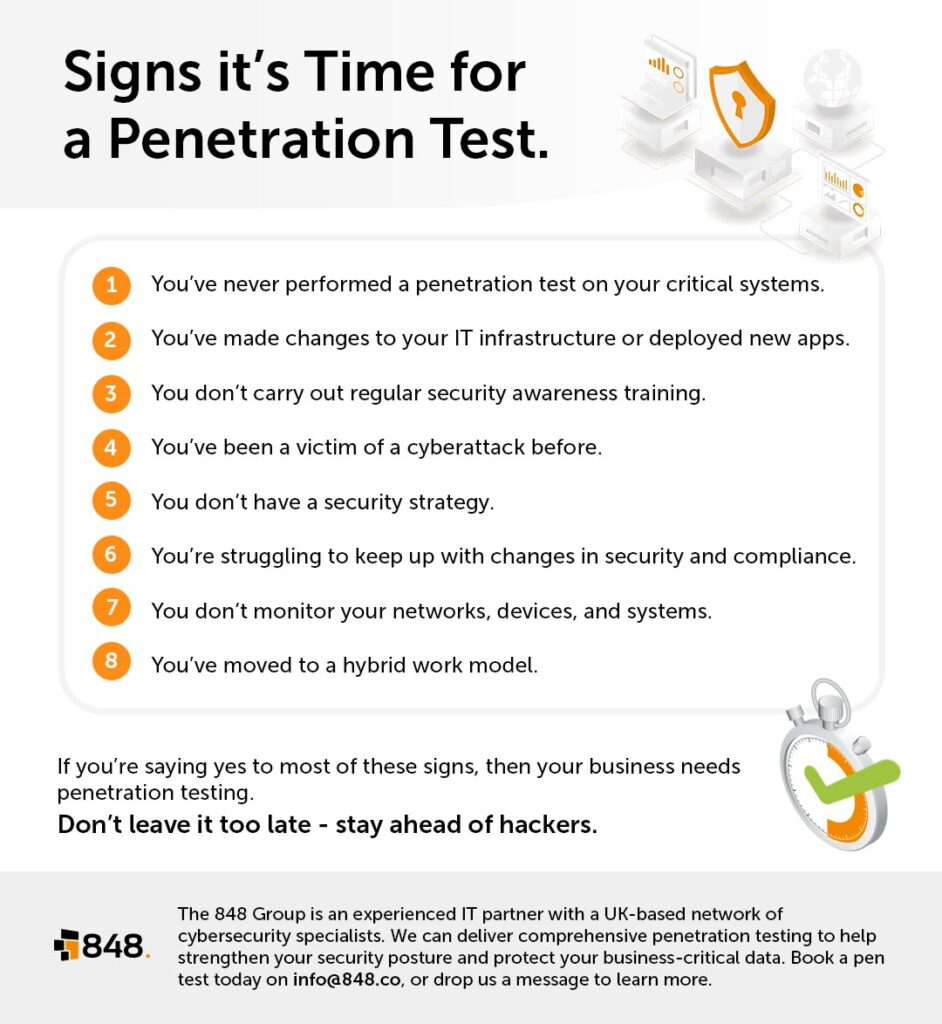Stay Ahead of Threats: The Value of Cyber Security Penetration Testing
Understanding the Basics of Cyber Security Penetration Testing
In the realm of cyber security, penetration testing has emerged as a crucial practice to safeguard sensitive data against potential threats. Simply put, penetration testing simulates cyber-attacks to identify vulnerabilities within systems, applications, or networks.

By evaluating these weaknesses, organizations can proactively enhance their security measures. Imagine a trusted friend trying to break into your house to test your security systems. While it may sound counterintuitive, having someone do this allows you to spot potential entry points you might have previously overlooked. In a similar vein, penetration testing empowers businesses by:
- Identifying vulnerabilities that attackers could exploit.
- Assessing the effectiveness of existing security measures.
- Providing actionable insights that guide risk management strategies.
Importance of Cyber Security in Today’s Digital Landscape
As our world becomes increasingly digital, the importance of robust cyber security cannot be overstated. With more enterprises moving their operations online, the risk of cyber threats rises proportionately. Consider this:
- Data breaches occur every second, affecting millions globally.
- The average cost of a data breach can reach up to $3.86 million.
These staggering figures highlight the fact that investing in penetration testing and comprehensive cyber security strategies is no longer optional; it is a necessity. Embracing these practices not only protects valuable data but also fortifies customer trust, ensuring a resilient digital environment for all.

Fundamentals of Penetration Testing
Definition and Objectives of Penetration Testing
Building upon our exploration of cyber security, let’s delve deeper into penetration testing. At its core, penetration testing, often referred to as “pen testing,” is a simulated cyber-attack intended to discover security weaknesses before malicious hackers can exploit them. It’s akin to hiring a security expert to assess how easily someone could bypass your locks and alarm systems. The primary objectives of penetration testing include:
- Identifying Vulnerabilities: Pinpointing security weaknesses that could be exploited.
- Assessing Impact: Evaluating the potential consequences of a successful attack.
- Testing Security Responses: Analyzing how well the organization responds to security threats.
Types of Penetration Testing
Understanding the different types of penetration testing is essential for businesses to choose the right strategy. Here are the most common methods:
- Black Box Testing: Testers have no prior knowledge of the system, mimicking an external hacker’s approach. This method helps identify vulnerabilities from an outsider’s perspective.
- White Box Testing: Here, testers have full access to the internal components and architecture. This thorough approach provides a comprehensive assessment of potential risks.
- Gray Box Testing: Combining elements of both black and white box testing, this type provides partial knowledge to testers, allowing them to simulate an insider attack.
By understanding these types, organizations can effectively tailor their penetration testing to suit specific needs and optimize their security posture.

Benefits of Cyber Security Penetration Testing
Identifying Vulnerabilities and Weaknesses
Following our exploration of penetration testing fundamentals, it’s essential to highlight its tangible benefits. One of the primary advantages of cyber security penetration testing is its ability to identify vulnerabilities and weaknesses within an organization’s systems. Much like a medical check-up can reveal underlying health issues, penetration testing exposes potential security flaws, such as:
- Unpatched Software: Software that hasn’t been updated can serve as an entry point for attackers.
- Misconfigured Security Settings: Often, security settings can be misconfigured during installation, inadvertently leaving systems open to breaches.
- Weak Password Policies: Basic password requirements can easily be bypassed, exposing critical data.
Recognizing these vulnerabilities enables organizations to act swiftly, mitigating risks before they can be exploited.
Enhancing Overall Security Posture
Another significant benefit of penetration testing lies in its ability to enhance an organization’s overall security posture. By proactively assessing and addressing vulnerabilities, businesses can foster a culture of security awareness. Consider the following improvements that can be made through penetration testing:
- Strengthened Defenses: By addressing identified weaknesses, businesses can reinforce their defenses, making it more challenging for attackers to breach their systems.
- Informed Strategies: Building a comprehensive understanding of potential threats helps in crafting effective security policies and response strategies.
- Regulatory Compliance: Regular testing helps organizations stay compliant with industry regulations, reducing legal risks and potential fines.
In essence, penetration testing is not merely a one-time task; it becomes an integral part of ongoing security strategies, ultimately creating a safer digital environment.

Planning and Executing Penetration Testing
Steps to Prepare for Penetration Testing
Transitioning into the practical realm, planning and preparing for penetration testing is a crucial step in ensuring its success. Taking the time to prepare can significantly enhance the overall effectiveness of the test. Here’s a streamlined approach to kick-start this process:
- Define the Scope: Determine which systems, applications, or networks will be tested. This step lays the groundwork for focused efforts.
- Identify Objectives: Establish what you aim to accomplish. Are you looking to test specific vulnerabilities or evaluate overall resilience? Clear objectives guide the testing process.
- Select the Right Team: Whether using in-house experts or hiring a third-party team, ensure they have the right skills and experience in penetration testing.
- Obtain Necessary Approvals: Ensure all stakeholders are informed and approvals are secured, preventing any misunderstandings during execution.
By following these steps, organizations can effectively set the stage for a successful penetration testing engagement.
Executing Penetration Testing Activities
Once preparations are complete, executing the penetration testing activities needs to be systematic to yield meaningful results. Here’s how the process typically unfolds:
- Information Gathering: Begin by collecting data on the target systems to identify possible attack vectors.
- Vulnerability Assessment: Analyze the gathered data for weaknesses that could be exploited during the testing phase.
- Exploitation: This is the hands-on phase where testers attempt to exploit identified vulnerabilities, simulating a real-world attack scenario.
- Post-Exploitation: After successfully breaching the system, assess the extent of access gained and potential damage. Document all findings meticulously.
- Reporting: Compile a detailed report outlining vulnerabilities found, methods used, and recommended remediation steps. This report should serve as a roadmap for enhancing security measures.
By meticulously planning and executing these stages, organizations can derive insightful information that significantly bolsters their cyber security defenses.

Tools and Technologies in Penetration Testing
Commonly Used Tools in Cyber Security Testing
As we continue our journey into the realm of penetration testing, it’s vital to recognize the role of tools and technologies that empower professionals in identifying vulnerabilities. There’s an arsenal of tools available that cater to various aspects of penetration testing, and knowing which to use is essential. Here are some commonly utilized tools:
- Nmap (Network Mapper): An essential tool for network discovery, Nmap helps identify devices on a network and the services they run, laying the groundwork for further testing.
- Metasploit Framework: This powerful tool offers a wide range of exploits and payloads, making it perfect for simulating attacks on systems.
- Burp Suite: A favorite among web application testers, Burp Suite provides a comprehensive platform for web security testing, including interception proxies and vulnerability scanners.
- Wireshark: A network protocol analyzer that allows testers to capture and inspect data packets, vital for understanding network traffic.
Choosing the right tools can significantly improve the efficiency and effectiveness of penetration testing efforts.
Advancements in Penetration Testing Technologies
In recent years, the field of penetration testing has witnessed exciting advancements in technologies that enhance testing capabilities. These innovations are reshaping how security assessments are conducted. Some noteworthy advancements include:
- Artificial Intelligence (AI): AI-driven tools can analyze vast amounts of data in real-time, helping to identify anomalies that may indicate security threats.
- Automated Scanning Tools: Automation has transformed the speed and efficiency of penetration testing, allowing organizations to conduct tests more frequently without putting excessive strain on resources.
- Cloud-Based Solutions: As businesses increasingly shift to cloud environments, cloud-specific penetration testing tools have emerged, focused on assessing vulnerabilities unique to cloud infrastructure.
These technological strides not only streamline penetration testing but also adapt to the evolving threat landscape, ensuring organizations stay one step ahead in their cyber defense strategies.

Regulatory Compliance and Penetration Testing
Understanding Regulatory Requirements
As we navigate through the intricate landscape of cyber security, it’s crucial to recognize the role of regulatory compliance in guiding organizations towards robust security practices. Different industries have specific regulations governing data protection and privacy, such as:
- General Data Protection Regulation (GDPR): Enforced in the EU, GDPR mandates stringent measures to safeguard personal data, applying to organizations worldwide that handle EU citizens’ information.
- Health Insurance Portability and Accountability Act (HIPAA): For healthcare organizations in the U.S., HIPAA outlines the requirements for safeguarding sensitive patient information.
- Payment Card Industry Data Security Standard (PCI DSS): Retailers and service providers must comply with this standard to ensure credit card information is protected during transactions.
Understanding these regulatory requirements is vital, as non-compliance can lead to hefty fines and reputational damage.
Role of Penetration Testing in Compliance
Penetration testing serves as a foundational element in meeting these regulatory requirements. For instance, many regulations advocate for regular security assessments to identify vulnerabilities. Here’s how penetration testing contributes to compliance:
- Proactive Identification of Risks: By conducting regular pen tests, organizations can uncover security weaknesses before they are exploited, demonstrating due diligence to regulators.
- Documentation of Findings: Comprehensive reports produced post-testing not only guide remediation efforts but also serve as evidence of compliance during audits.
- Continuous Improvement: Regulatory frameworks often require organizations to continuously improve their security posture. Regular penetration testing facilitates ongoing assessments and adaptations in security measures.
In summary, penetration testing is an indispensable practice that not only bolsters an organization’s security defenses but also fulfills regulatory obligations, fostering a culture of compliance and accountability.

Challenges and Considerations in Penetration Testing
Common Challenges Faced during Penetration Testing
As organizations embark on their penetration testing journeys, they often encounter a set of inherent challenges that can hinder success. Acknowledging these challenges is essential for effective planning and execution. Some common obstacles include:
- Scope Creep: Often, the defined scope of testing can expand during the engagement, creating confusion and potential oversights. To combat this, it’s crucial to establish clear boundaries from the outset.
- Restricted Access: Gaining necessary permissions and access to sensitive systems can pose challenges. If testers lack proper access, they may not uncover all vulnerabilities, which can lead to a false sense of security.
- Internal Resistance: Some teams might be hesitant to allow external penetration testers into their systems, fearing exposure of their vulnerabilities. Building trust through transparent communication can help mitigate these concerns.
- Time Constraints: Limited time for thorough testing can hinder the identification of all potential security issues. Setting realistic timelines is vital to ensure comprehensive evaluations.
Key Considerations for Successful Penetration Testing
To ensure successful penetration testing engagements, several key considerations should be kept in mind:
- Clear Communication: Engage all stakeholders early on to establish expectations and foster an environment of collaboration.
- Thorough Planning: Spend adequate time on pre-engagement planning, defining the scope and objectives to minimize confusion later.
- Continuous Improvement: Treat each penetration test as a learning opportunity. Post-test reviews can help refine processes and improve future assessments.
- Post-Test Remediation:Ensure that findings from the testing are promptly addressed. Continuous risk assessment should follow, solidifying the organization’s security posture.
By addressing these challenges and keeping these considerations in mind, organizations can unlock the full potential of penetration testing, ultimately creating a more resilient digital environment.
Continuous Improvement and Assessment
Importance of Regular Testing and Assessment
As organizations adapt to the ever-evolving landscape of cyber threats, the importance of regular testing and assessment cannot be overstated. Just as one would undergo routine medical check-ups to ensure optimal health, regular penetration testing serves as a safeguard for an organization’s cyber health. Consider these compelling reasons for maintaining a consistent testing schedule:
- Identification of New Threats: The cyber threat landscape changes rapidly, with new vulnerabilities emerging constantly. Regular assessments keep businesses aware of what threats they face and how to counteract them.
- Regulatory Compliance: Many industry regulations require organizations to conduct periodic security assessments. Regular testing helps maintain compliance and avoid costly penalties.
- Culture of Awareness: Routine testing fosters a culture of security mindfulness within an organization. Employees become more vigilant about maintaining safe practices, knowing that tests are forthcoming.
Incorporating Penetration Testing into Security Strategy
To maximize the benefits of penetration testing, organizations should seamlessly incorporate it into their overall security strategy. Here’s how to do so effectively:
- Establish a Testing Schedule: Set regular intervals for penetration tests, whether quarterly, semi-annually, or annually, depending on the organization’s risk appetite and resources.
- Evaluate Evolving Technologies: As new technologies and methods of attack arise, ensure that penetration testing practices are updated accordingly to reflect these changes.
- Integrate Findings into Security Policy: Utilize results from testing to inform and enhance security policies and practices. Each test should provide actionable insights for continuous improvement.
By embedding penetration testing into the security strategy and committing to regular assessments, organizations can build a robust cyber defense that evolves alongside emerging threats, ultimately safeguarding their critical assets.

Conclusion and Future Outlook
Summary of the Value of Cyber Security Penetration Testing
As we wrap up our exploration of penetration testing, it’s clear that its value in the realm of cyber security is immense. By simulating real-world attacks, organizations can proactively identify vulnerabilities, bolster their defenses, and foster a culture of security awareness. The insights gained from penetration testing contribute not only to compliance with regulatory standards but also to the overall resilience of an organization’s security posture.
- Risk Mitigation: Regular testing enables timely identification and remediation of vulnerabilities.
- Compliance Assurance: Frequent assessments align with regulatory requirements, providing peace of mind.
- Continuous Improvement: Each test offers learning opportunities that enhance security strategies and employee awareness.
Future Trends and Developments to Stay Ahead of Threats
Looking forward, the landscape of penetration testing will continue to evolve as new technologies and threats emerge. Here are some trends worth noting:
- Integration of AI and Machine Learning: As these technologies become more prevalent, they will enhance the accuracy and efficiency of penetration testing, allowing for quicker identification of vulnerabilities.
- Focus on Cloud Security Testing: As more organizations migrate to the cloud, tailored penetration testing solutions will be essential for identifying risks specific to cloud infrastructures.
- Emphasis on Red Teaming: A shift towards more comprehensive assessments that include adversarial simulation exercises will provide deeper insights into potential attack vectors.
In conclusion, as organizations embrace these trends and continually refine their penetration testing practices, they will be better equipped to navigate the increasingly sophisticated cyber threat landscape, ensuring the ongoing protection of their critical assets.
This article is written by Fady Azzi
Fady Azzi is a Cyber Security expert, based in Sydney, Australia. Through quick and short videos full of interesting and trusted information, Fady’s channel aims to inform and educate people of all ages about cyber security, hacking, technology and many interesting topics.

0 Comments